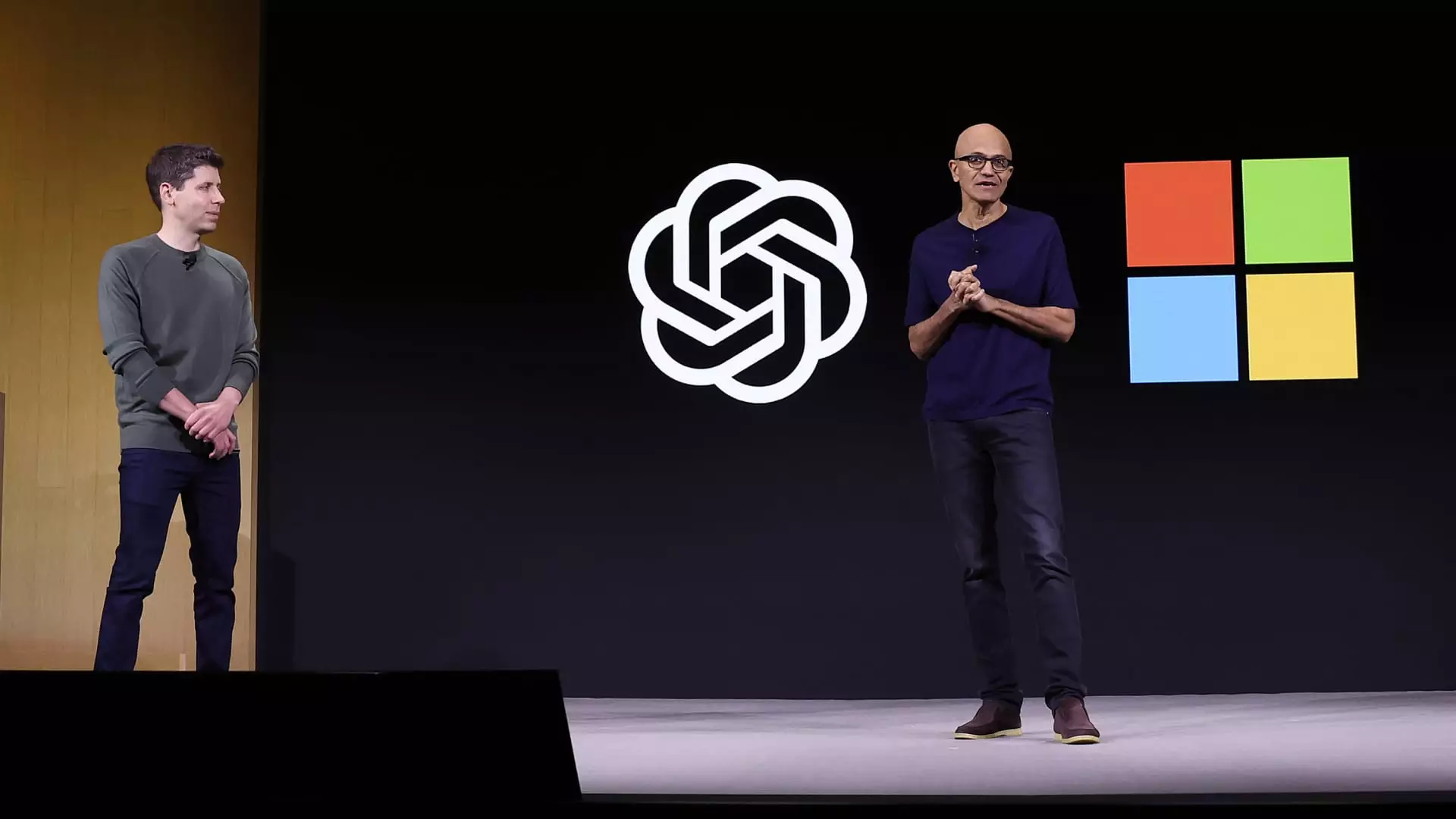Microsoft’s investment in artificial intelligence (AI), particularly its substantial financial commitment to OpenAI, is raising eyebrows among investors and analysts alike. With an injection nearing $14 billion, the tech giant has poured resources into what many see as a groundbreaking partnership involving the well-known ChatGPT and generative AI technologies. However, this bold investment is not without its consequences; the company recently projected a staggering $1.5 billion drop in income for the upcoming quarter, primarily due to anticipated losses from its collaboration with OpenAI. The scenario highlights a classic case of high-risk, high-reward, yet the immediate financial reality paints a less rosy picture for those expecting instant returns.
OpenAI appears to be experiencing significant financial strain, forecasting losses could reach $5 billion this year on merely $4 billion in revenue. This imbalance evokes questions about the sustainability of such an ambitious venture. Although Microsoft CEO Satya Nadella touts the transformative potential of AI, the current fiscal trajectory of OpenAI suggests a contrasting narrative where operational costs are overshadowing revenue generation. These losses, while alarming in their magnitude, are being absorbed by Microsoft under an equity accounting method, which technically means that the negative impact of OpenAI’s financial performance is factored into Microsoft’s overall earnings.
Microsoft’s strategy of integrating OpenAI’s systems into its suite of products reveals a nuanced corporate approach. While the partnership remains a pivotal element for Microsoft’s future growth, it appears the company is simultaneously exploring alternative AI solutions, as illustrated by GitHub’s decision to allow developers access to models from competitors like Google and Anthropic. This diversification strategy could be perceived as prudent, especially in an era of fierce competition in the AI sector. By not entirely relying on OpenAI, Microsoft may be seeking to stabilize its portfolio against the unpredictable financial ebbs and flows characteristic of pioneering technologies.
The AI race extends beyond Microsoft and OpenAI, with Amazon stepping into the fray by investing $4 billion in Anthropic, a rival organization founded by former OpenAI team members. This points to an industry landscape where traditional competitors are also looking to secure their slice of the generative AI market. Microsoft’s transparency about its financial ties to OpenAI is a departure from traditional corporate secrecy, and it reveals both the pressure it faces and its commitment to driving AI development. As earnings season continues and pressure mounts, all eyes will remain on how these corporate strategies play out amidst a rapidly evolving technological environment.
While Microsoft’s financial forecast may be disheartening, its strategic maneuvers illustrate a company that is not just committed to AI but is also agile enough to seek alternatives. The question remains: can Microsoft withstand the financial turbulence long enough for OpenAI’s potential to manifest into significant return on investment, or will the current losses overshadow the long-term benefits? Only time will tell if this gamble pays off or if it leads to a reassessment of corporate strategy in the AI sector.


Leave a Reply